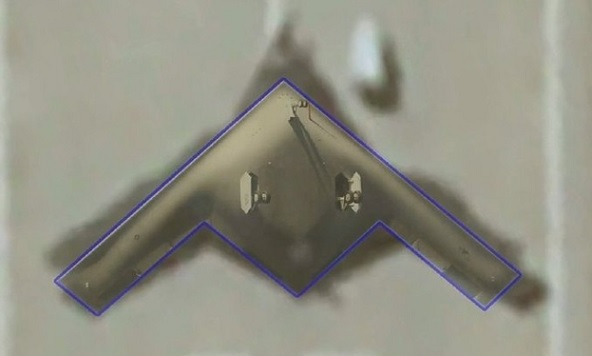FPI / October 15, 2025
By Richard Fisher
On Sept. 19, 2025, satellite images began to appear on the Chinese internet of a very large unmanned flying-wing style aircraft, regarded as an unmanned combat aerial vehicle (UCAV), potentially large enough to undertake nuclear strikes against the United States from bases in Chinese territory.

For over 20 years China has also been developing a large stealthy flying wing manned bomber, long assessed to be a product of the Xian Aircraft Corporation, usually called the “H-20,” that has benefited from Chinese espionage targeting the Northrop-Grumman B-2 flying wing stealth bomber.
However, the advent of a potential unmanned strategic bomber would constitute an early completion of the Chinese ambition to build a “nuclear triad,” or the nuclear-armed intercontinental ballistic missiles (ICBMs), nuclear armed submarine launched ballistic missiles (SLBMs) and the nuclear armed flying bombers able to strike enemies like the United States.
By measuring the pixels on the satellite image, it is estimated that the unmanned aircraft may have a wingspan of about 43 meters — close to the estimated wingspan of the new U.S. Northrop Grumman B-21 second generation stealthy flying wing bomber.
In addition, the length of the new Chinese unmanned aircraft is estimated to be 22-23 meters compared to an estimated 16 meters length for the B-21.
This large, unmanned aircraft could be a product of the China Aerospace Science and Technology Corporation (CASC), China’s largest state-owned missile maker, which has also developed a family of unmanned aircraft.
Full Report . . . . Current Edition . . . . Subscription Information
